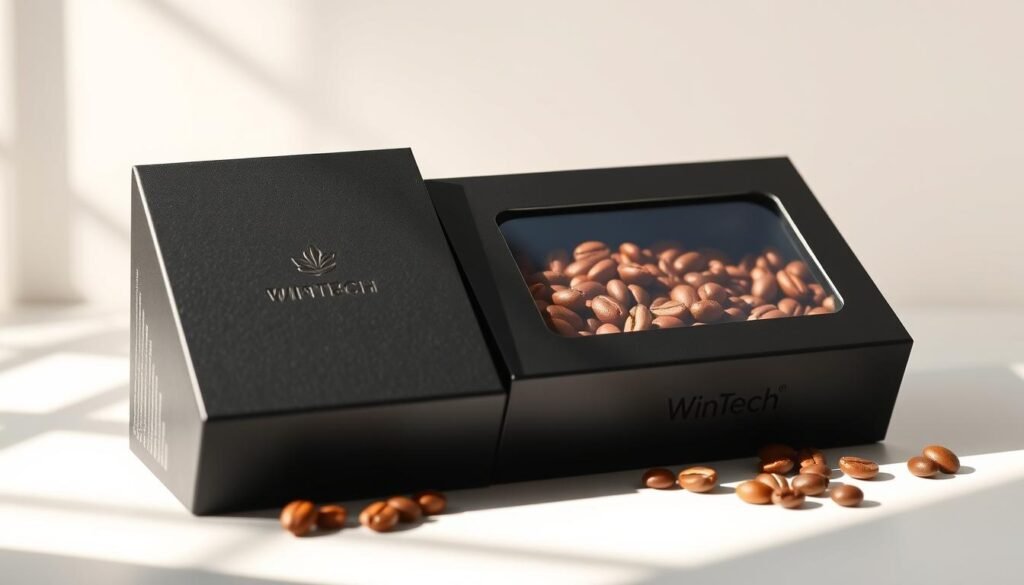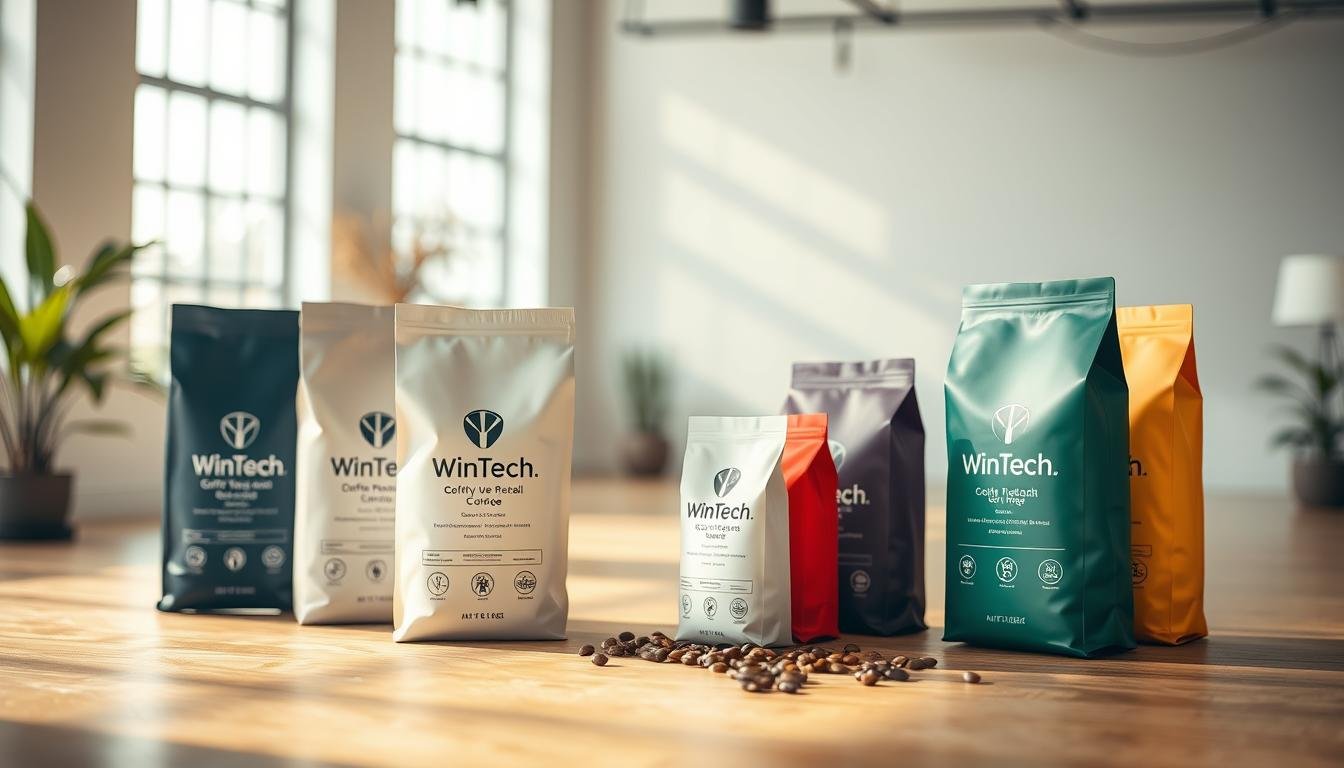Have you ever wondered how much waste is generated by the ineffective packaging of coffee beans? Every year, millions of tons of packaging materials end up in landfills, compromising both environmental sustainability and coffee quality.
The Wintech packaging of coffee beans represents a critical intersection between product preservation and environmental responsibility. Advanced coffee bean storage techniques are revolutionizing how roasters protect their premium products while minimizing ecological impact. Airtight coffee packaging has become increasingly sophisticated, allowing coffee producers to maintain peak freshness and reduce material waste.
Modern coffee brands are now investing in innovative packaging of coffee beans solutions that go beyond traditional preservation methods. By implementing data-driven strategies, companies can significantly reduce their environmental footprint while ensuring consumers receive the highest quality coffee possible.
Key Takeaways of packaging of coffee beans
- Innovative packaging reduces coffee bean waste dramatically
- Sustainable packaging protects product quality and environment
- Data-driven approaches optimize coffee bean storage techniques
- Airtight packaging extends coffee freshness and shelf life
- Environmental considerations are now central to packaging design
Importance of Sustainable Packaging of Coffee Beans
The coffee industry is undergoing a transformative shift towards sustainable packaging of coffee beans. As environmental concerns grow, coffee producers and consumers are becoming increasingly aware of the ecological footprint created by traditional packaging methods.

Modern coffee brands recognize that sustainable packaging of coffee beans isn’t just an environmental responsibility—it’s a critical component of coffee freshness preservation and brand reputation. Specialty coffee bags now represent more than simple containers; they embody a commitment to ecological stewardship.
The Environmental Impact of Coffee Packaging
Traditional coffee packaging contributes significantly to global waste problems. The coffee industry generates millions of tons of packaging waste annually, with most materials ending up in landfills or oceans.
- Plastic packaging accounts for approximately 70% of coffee packaging waste
- Single-use materials create substantial environmental challenges
- Non-biodegradable packaging can take hundreds of years to decompose
Benefits of Sustainable Practices in Coffee Packaging
Sustainable packaging offers multiple advantages for coffee producers and consumers:
- Reduced carbon footprint
- Enhanced brand reputation
- Improved product preservation
- Lower long-term environmental costs
Case Studies on Successful Coffee Bean Packaging
Leading companies like Wintech Package demonstrate innovative approaches to sustainable packaging. Their strategies focus on developing eco-friendly materials that maintain coffee quality while minimizing environmental impact.
| Company | Packaging Innovation | Environmental Impact |
|---|---|---|
| Wintech Package | Biodegradable Coffee Bags | 90% Reduction in Plastic Waste |
| GreenBrew Solutions | Compostable Packaging | 85% Lower Carbon Emissions |
| EcoCoffee Innovations | Recyclable Specialty Coffee Bags | 75% Waste Reduction |
By investing in sustainable coffee packaging, brands can create meaningful environmental change while delivering high-quality products to discerning consumers.
Innovative Techniques in the Packaging of Coffee Beans
The coffee packaging landscape is experiencing a revolutionary transformation. Innovative design and sustainable materials are reshaping how coffee beans are preserved, transported, and presented to consumers. Your understanding of these cutting-edge techniques can help you make more informed choices about coffee packaging.

Biodegradable Materials: A Sustainable Solution
Coffee packaging materials are evolving to address environmental concerns. Manufacturers are now developing innovative solutions that combine performance with sustainability:
- Plant-based compostable bags
- Recyclable multi-layer packaging
- Materials derived from renewable resources
Vacuum Sealed Coffee: Preserving Freshness
Vacuum sealed coffee packaging represents a breakthrough in maintaining bean quality. By removing oxygen and creating an airtight environment, these packaging techniques dramatically extend shelf life. The integration of a specialized degassing valve allows carbon dioxide to escape while preventing outside air from entering.
Custom Designs Enhancing Packaging Efficiency
Modern coffee packaging goes beyond mere containment. Custom designs now focus on:
- Minimizing material waste
- Improving resealability
- Enhancing user experience
These innovative approaches demonstrate how thoughtful design can simultaneously reduce environmental impact and improve product quality. By investing in advanced packaging technologies, coffee producers are creating more sustainable and efficient solutions for consumers.
Strategies to Optimize the Packaging of Coffee Beans
Packaging plays a critical role in preserving the quality and freshness of coffee beans. Your approach to selecting coffee packaging materials can significantly impact the taste and longevity of your product. By implementing strategic optimization techniques, coffee roasters can reduce waste while maintaining the highest standards of bean preservation.
Understanding material waste becomes crucial in developing sustainable packaging solutions. Tracking your coffee roasting date and analyzing packaging efficiency helps identify areas for improvement. Modern coffee brands are now investing in advanced tracking systems that measure waste at every stage of the packaging process, enabling data-driven decisions that benefit both the environment and product quality.
The circular economy concept is transforming how coffee packaging is designed and implemented. You can contribute to this sustainable approach by selecting recyclable materials, partnering with eco-friendly manufacturers, and creating packaging that serves multiple purposes beyond initial product protection. Innovative companies are now developing packaging solutions that can be repurposed or easily recycled after the coffee beans have been consumed.
Industry collaboration remains key to advancing packaging technologies. By working together, coffee roasters, packaging manufacturers, and sustainability experts can develop cutting-edge solutions that reduce environmental impact while preserving the delicate characteristics of high-quality coffee beans. Your commitment to exploring and implementing these strategies will position your brand at the forefront of sustainable coffee packaging innovation.

